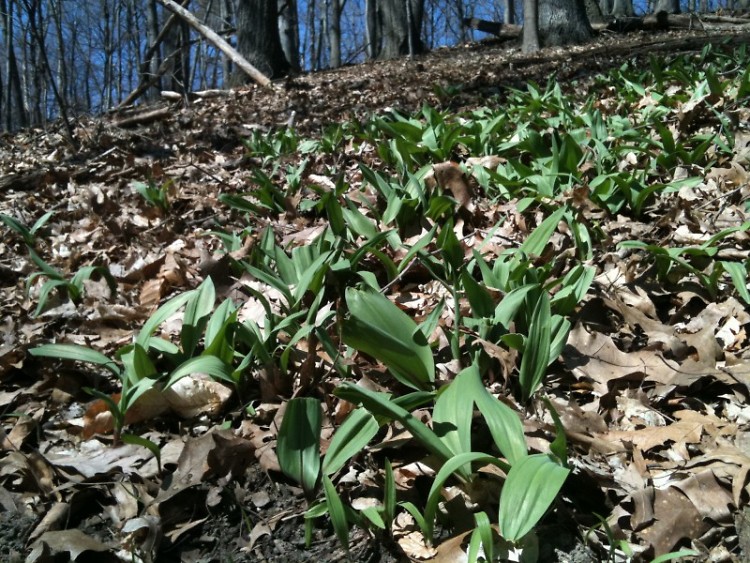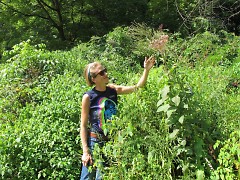Our culture is starting to shift. We are beginning to understand the connection between healthy soil and healthy people. We are beginning to make choices and invest in good, healthful and local whole foods as part of our health insurance. Lifestyles are adjusting to choose values of cooking, gardening, and eating together. It’s a refreshing shift in our community’s way of life.
Local food isn’t a trend. What we’ve been seeing in the marketplace - an increase in organics, profiles of local farmers, talk of healthy soil - these are all important facets getting more attention in a new food and wellness paradigm that is taking shape and is here to stay. Springtime in Michigan is an easy time to revisit your own commitment to living hyperlocal for your health. A few popular ideas, if you haven’t considered them already, include joining a Community Supported Agriculture program and perhaps cultivating your first herb and vegetable garden.
Beyond gardening, what about learning about the wild plants that live in your yard, neighborhood or nearby fields and forests?
Foraging is becoming a more and more popular skill, especially as urbanites yearn to connect to the land around them. The uncultivated spaces around us offer many different plants that can be used as wild foods and herbal preparations to keep us well, and spring is an excellent time to learn to forage.
But where to start? How do you venture into developing your skills as a wild plant person?
Where to start: Get outside.
As a forager, wildcrafter and backyard herbalist, frequently I am asked, "What's outside now that I can forage or harvest?" and "How do I know what's edible?" and "Where do I start if I want to forage?"
My short answer usually is, "If you want to forage, you'll have to get outside." Being outside, taking time to learn the land and plants around you is key not only in learning what plants are edible, but it helps cultivate within you a relationship to the land around you. It helps foster an understanding of place and over time, this relationship will lead to being a steward of the land in the most true sense.
Philosophy aside, my advice to new foragers on learning how to look at the land and learning about plants comes directly from my own self-guided learnings that began several years ago outside my own front door.
Pick a place that you are familiar with, map it, and watch
Foraging, at its essence, is being able to rely on the wild plants that live around you. So in thinking about your getting outside, step into your yard (patch of grass, even) right outside your doorstep to start your learnings. Learn first about where you live. It's where you literally have your own roots.
Make a map of the area. Draw it out by hand. Look it up in Google Maps to see where you are in relation to the rest of the area around you. Take note of the significant geological structures like lakes, streams, forests (gypsum mines!) and also the manmade, built constructs in your community like highways, factories, etc. This is where you live.
Then begin to go outside on regular walks where you live, intentionally taking time to notice all that is growing. Take note of the new plants that will come up across the season.
Add the plants you notice to your map. Take photos, draw pictures of plants to learn them more intimately. Don't get caught up in learning their names at first. Collect these photos and plant clippings if you need, and from there start your ID process.
Take time for proper plant identification
It's wise, for a multitude of reasons, to know for certain the plants before you do any harvesting. Don't harvest unless you can positively ID the plant of interest. This is both respectful of the plant and also can help prevent you from making yourself seriously ill from harvesting the wrong plant (which is possible, and would just be a drag).
Consider also picking up a few basic plant ID guides - the Peterson Field Guides are easy to procure as are the field guides by The Nation Wildlife Federation. If you do not want to invest in a few field guides for plant ID, head to the Grand Rapids Public Library for field guide references and the Frederik Meijer Gardens has an extensive selection of Michigan Botany Field Guides.
Take a look at the writings by Steve Brill, Sam Thayer and Leda Meredith (also a NYC urbanite homesteader) for ID, recipes, and musings by good plant people. Great Lakes Herbalist and knowledgeable forager Jim McDonald also has a good list of resources on wild foods and folk medicine making from local Great Lakes plants.
No field guide or resource is completely exhaustive, and you'll find yourself seeking out a multitude of resources on your foraging learning journey. There are also more and more app-based field guides popping up, and they vary in functionality. As technology increases, I am sure one day we will have access to an app that is like a Shazam for plants! And even then, I am sure we will also still need to rely on those field guides.
Ethical foraging and plant sustainability
Beyond positive plant ID, it is important not to harvest until you can affirm that the harvest won't negatively impact the plant's population. Some things to ask: Is it local to Grand Rapids and is it plentiful (like Garlic Mustard)? Is it threatened? Are more people harvesting this plant and will my harvest, too, stress its abundance in our region?
Case in point: the Wild Leek. Recently, the issue of sustainable foraging and harvesting has come up in regards to the foraging of Wild Leeks or Ramps, as they are also known. Plentiful in the Eastern US from New York to Appalachia and west to the Great Lakes, the Wild Leeks can be found on the forest floor of Beech/Maple hardwood forests as early as late March and are a spring favorite of foragers.
Here in Michigan, the Wild Leeks are plentiful in the Beech/Maple woods along the rivers and on the back dunes along the Lake Michigan shoreline. They are abundant in Leelanau County, throughout the Sleeping Bear region and in the southwest portion of the state near St. Joseph and toward the Indiana border. In Grand Rapids, they exist but do not carpet the forest floor as in other areas of the state.
As a wild edible, Wild Leeks are delicious pickled (for a dirty martini!); the green tops can be cut and put into a salad simply roasted with olive oil and drizzled with lemon.
The secret on this plant's deliciousness is out: The recent popularity of the earth to table movement is sending more and more chefs and home cooks into the woods to forage these spring bulbs. They are becoming a popular menu item at high-end restaurants in New York, Chicago and even here in the Grand Rapids area.
A recent feature in The New York Times featured the Wild Leek and claimed the increase in harvesting for the restaurant market and by hobby foragers is putting pressure on the wild leek population. While the wild leek certainly is not close to being extinct in the Great Lakes area, it is something to consider as the plant ends up in the menus - particularly when we know the plant is not widely distributed.
So something to consider before harvesting: Foraging isn't about free forest food for the taking. It's about relationships with the plants around us. Do no harm, and leave the places from which we harvest in better shape than what we found them. That is stewardship, and the relationship you will cultivate with the land around you is more than just nourishing the body - it is nourishing for the soul.
When you finally sit down to a table of your own harvested meal, give thanks and share it with friends. And always, always give back to the land that nourishes so all may benefit from the bounty.
****While written for an herbalist audience, New York herbalist 7Song authors an excellent primer on ethical foraging and wildcrafting. Read it here.
The Rapidian, a program of the 501(c)3 nonprofit Community Media Center, relies on the community’s support to help cover the cost of training reporters and publishing content.
We need your help.
If each of our readers and content creators who values this community platform help support its creation and maintenance, The Rapidian can continue to educate and facilitate a conversation around issues for years to come.
Please support The Rapidian and make a contribution today.




Comments
I'll grab some Weed-B-Gone and take care of that in a jiffy
Them are fightin' words. Bring your RoundUp and we'll battle it out. Evolution will win this one.
Great "get started" guide. So good of you to share your knowledge on this topic.